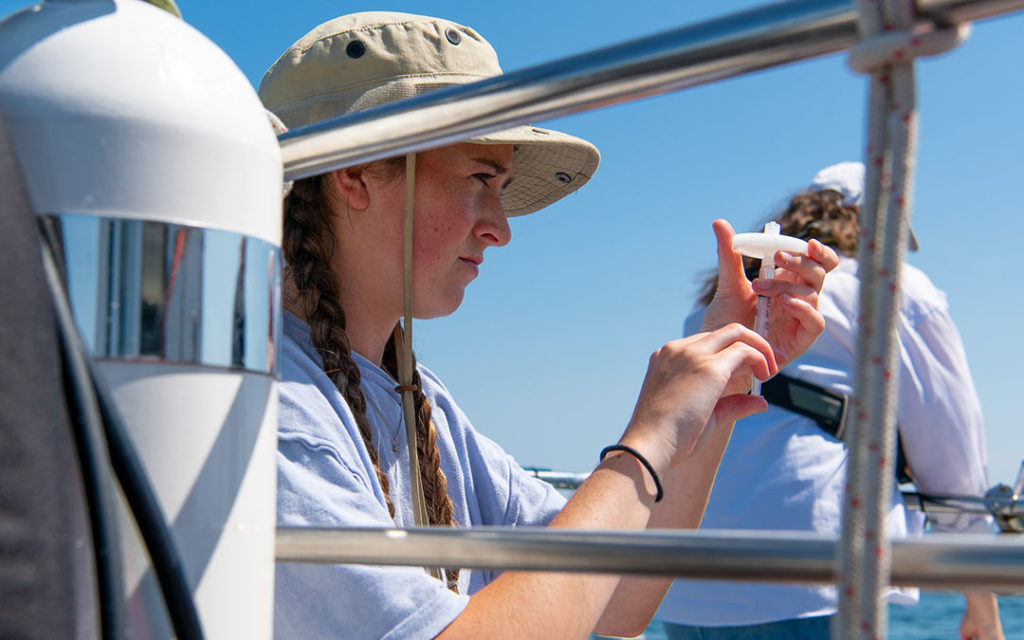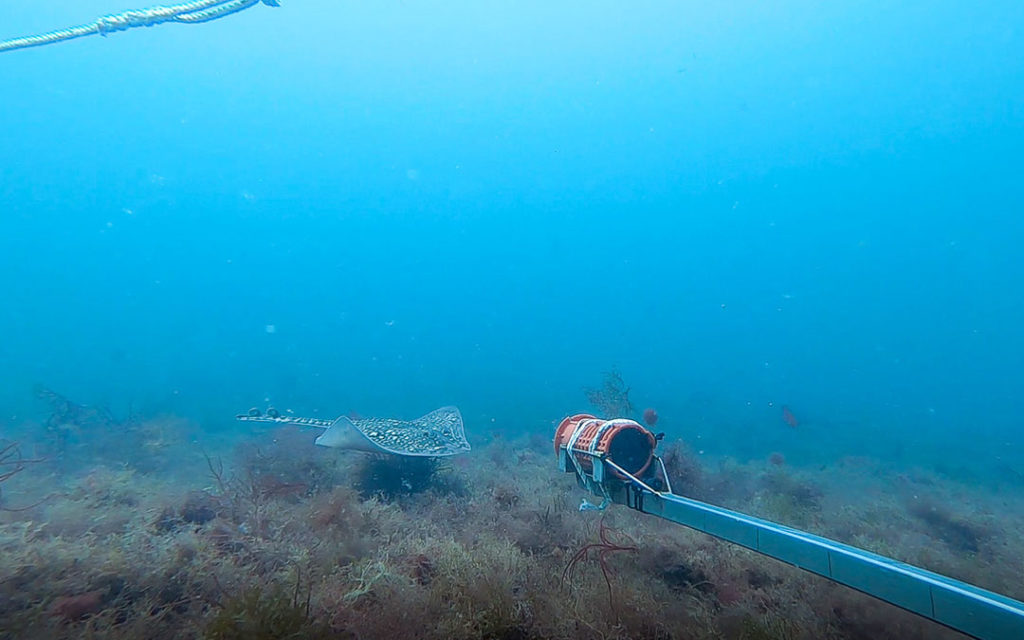University staff and students have begun an in-depth study of underwater habitats off the Sussex coast as part of a Greater Brighton-backed project to restore some of the most biodiverse habitat in the world, and recover a vital carbon sink.
Led by Dr Mika Peck and Dr Valentina Scarponi, the team from University of Sussex have begun conducting the first baseline survey of Sussex coastline, to explore the recovery of kelp forests following the recently implemented trawling ban.
Funded by the HEIF (Higher Education Innovation Fund) as part of the University of Sussex’s Covid Recovery Programme, in partnership with the Greater Brighton city region, the team will be gathering data at 34 sites between Shoreham and Selsey using three techniques:
- eDNA which use a water sample to determine the species that are present,
- baited underwater videos (BRUVs) dropped to the bottom of the sea to capture an hour of continuous footage,
- and bioacoustics using sound recordings to establish species activity and overall ecosystem health.
A Sussex team effort, the BRUV frames were built by Tim Cane, a Lecturer in Physical Geography at Sussex. The underwater cameras have already captured footage of butterfish, small spotted catsharks, conger eels, undulate rays and a shoal of Atlantic Mackerel on camera, but the team say activity is far less than it should be.
Dr Mika Peck, Senior Lecturer in Biology, said:
“The Sussex coast has an opportunity here to recover from years of damage, and welcome back high levels of biodiversity. Some of our monitoring sites are inside the byelaw area that are previously known to have dense presence of kelp beds. This is a unique opportunity to understand how marine systems might recover following removal of trawling pressure.
“We are hoping to find that, over time, kelp will recover and we’ll begin to welcome back healthy populations of priority threatened UK species such as herring, mackerel, and common sole.”
Marine scientist, Dr Ray Ward from the University of Brighton is also part of the team. The surveys will be conducted annually for five years, providing scientific evidence to the Sussex Kelp Restoration Project on the impacts and benefits of the Nearshore Trawling Byelaw prohibiting trawling for over 300 square kilometres of the coast, which was approved and came into effect in March 2021.
Kelp forests provide habitats for many marine species, and have the potential to lock up carbon, improve water quality and reduce coastal erosion by absorbing the power of waves. They once stretched 40 kilometres along the Sussex coast but, since the great storm of 1987, over 96% has been lost with trawling suspected of playing a key role in inhibiting local recovery.
The surveys, supported by the Blue Marine Foundation, are the next step within the Sussex Kelp Restoration Project, using research to monitor the impacts and benefits of the temporary byelaw.
Both Universities are members of the Greater Brighton Economic Board (GBEB) which oversees the City Region. Helping to restore the kelp forest is a key part of the GB10 pledges on the environment backed by the Board last year.
Photo top: University of Sussex staff and students have begun an in-depth study of underwater habitats off the Sussex coast (Credit – Stuart Robinson)
Photo: The team will be gathering data at 34 sites between Shoreham and Selsey (Credit – Stuart Robinson)

Photo: The aim of the project is to explore the recovery of kelp forests following the recently implemented trawling ban

Photo: Life such as the undulate ray has already been spotted by the team

